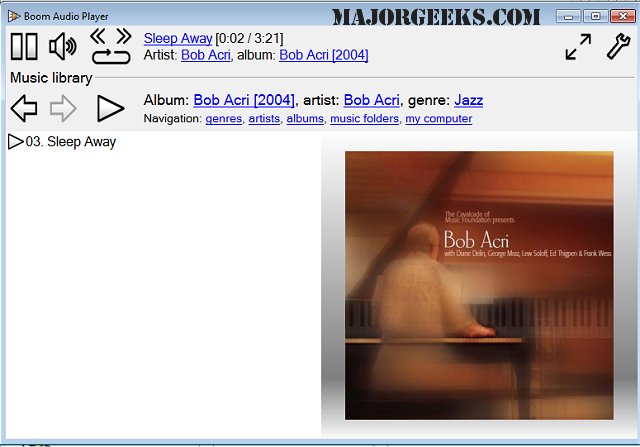The recently released Boom Audio Player 1.1 aims to simplify the music listening experience for casual users. True to its name, which might suggest a loud explosion, the software actually focuses on providing a straightforward audio playback solution rather than an overwhelming array of features. It boasts portability, meaning users can run the program without the need for installation, and supports a wide range of popular audio formats, such as MP3, FLAC, WAV, MP4/M4A, and WMA.
The player features user-friendly controls, including options for back, forward, pause, volume, repeat, and full-screen viewing. However, users have reported issues with drive recognition; the application struggles to detect drives correctly, particularly for users with non-standard configurations. For instance, if the music is stored on a drive labeled F, Boom may only recognize drives A, C, and D, and often incorrectly identifies them as nonexistent. Although users can select a specific folder in the preferences, the program still fails to recognize drives outside of its default settings.
While Boom Audio Player excels in adhering to the KISS (Keep It Simple Stupid) principle, it has room for improvement. To elevate itself to a top-tier audio player, it must address its drive detection issues and enhance its scanning capabilities for locating music files across various drives.
To extend the discussion, the developers of Boom Audio Player could consider implementing a feature that allows users to manually input or verify their drive configurations, which would help mitigate the detection issues. Additionally, they could introduce a feature that supports playlist creation and management, enabling users to curate their music experience more effectively. Enhancements to the user interface could also make navigation smoother and more intuitive. Overall, by addressing these shortcomings and expanding its functionality, Boom Audio Player could solidify its place as a go-to choice for those seeking a simple yet reliable music player
The player features user-friendly controls, including options for back, forward, pause, volume, repeat, and full-screen viewing. However, users have reported issues with drive recognition; the application struggles to detect drives correctly, particularly for users with non-standard configurations. For instance, if the music is stored on a drive labeled F, Boom may only recognize drives A, C, and D, and often incorrectly identifies them as nonexistent. Although users can select a specific folder in the preferences, the program still fails to recognize drives outside of its default settings.
While Boom Audio Player excels in adhering to the KISS (Keep It Simple Stupid) principle, it has room for improvement. To elevate itself to a top-tier audio player, it must address its drive detection issues and enhance its scanning capabilities for locating music files across various drives.
To extend the discussion, the developers of Boom Audio Player could consider implementing a feature that allows users to manually input or verify their drive configurations, which would help mitigate the detection issues. Additionally, they could introduce a feature that supports playlist creation and management, enabling users to curate their music experience more effectively. Enhancements to the user interface could also make navigation smoother and more intuitive. Overall, by addressing these shortcomings and expanding its functionality, Boom Audio Player could solidify its place as a go-to choice for those seeking a simple yet reliable music player
Boom Audio Player 1.1 released
Boom sounds like it would be an explosion, but, in reality, this program is designed to be a very simple music player.


